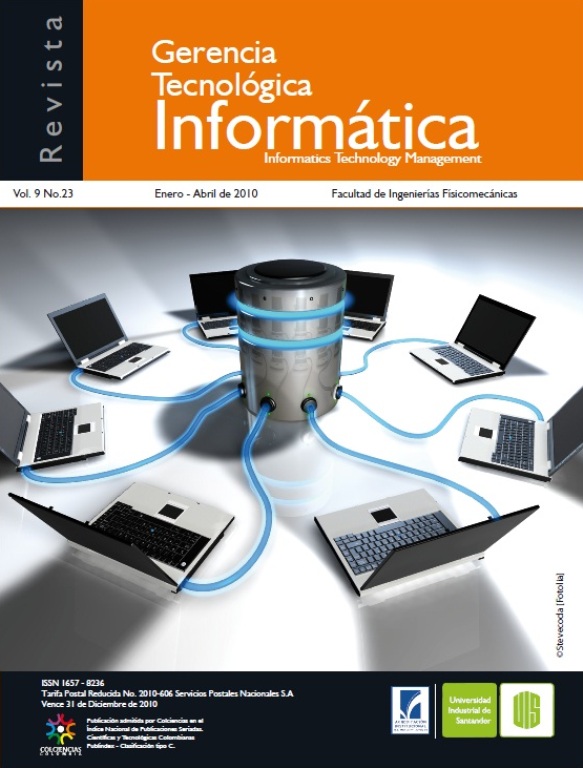PLANIFICACIÓN Y OPTIMIZACIÓN DE REDES DVB-T PARA LA PROVISIÓN DE SERVICIOS LOCALES Y MÓVILES EN COLOMBIA
Publicado 2011-01-25
Cómo citar
Resumen
RESUMEN
Actualmente, el estándar dominante a nivel mundial para la transmisión de TV digital Terrestre es DVB-T (Digital Video Broadcasting- Terrestrial). La mayoría de redes desplegadas han sido diseñadas para una alta capacidad de transmisión y en configuración de frecuencia única (SFN por sus siglas en inglés). DVB-T se diseñó para transmisión fija, con una capa física que no presenta la suficiente robustez para prestar servicios en movilidad. Adicionalmente, uno de los problemas de las redes SFN es la transmisión de contenidos locales, ya que todos los transmisores deben emitir el mismo contenido sincronizado en tiempo y frecuencia. En países donde aún no ha sido implementada la red de Televisión Digital Terrestre (TDT) como Colombia, se puede planificar la red haciendo uso de los últimos avances tecnológicos para ofrecer servicios de recepción fija y móvil, definir áreas de contenidos locales o regionales (LSA por sus siglas en inglés) en redes SFN y maximizar el nivel de cobertura en el escenario de despliegue. En este artículo se describen las siguientes soluciones técnicas compatibles con DVB-T para planificar y optimizar las redes TDT y se presentan parte de los resultados obtenidos en la investigación: diversidad de antenas, modulación jerárquica, mecanismos de corrección de errores en capa de aplicación (AL-FEC por sus siglas en inglés), codificación de video escalable SVC, time slicing, componente de transmisión satelital y gap-fillers. Adicionalmente, se describe la metodología de evaluación y validación de cada una de las soluciones propuestas. El artículo aborda temas de investigación que permiten la penetración en nuevos escenarios de recepción y nichos de mercado para la TV digital, y abre la oportunidad de establecer convenios de cooperación internacional entre instituciones colombianas y de países que al día de hoy ya han finalizado con éxito la transición de televisión analógica a digital, como es el caso de España.
PALABRAS CLAVES: DVB-T móvil, Modulación jerárquica, Diversidad de antenas, Corrección de errores en capa de aplicación, Áreas de servicio local.
ANALYTICAL SUMMARY
Nowadays, the dominant standard for broadcasting Digital Terrestrial Television (DTT) services on the world is DVB-T (Digital Video Broadcasting- Terrestrial). Most of the DVB-T networks deployed have been designed for high capacity transmission and configured in Single Frequency Network (SFN). DVB-T was designed for fixed rooftop reception using a physical layer with low robustness for mobile services. Further, the transmission of Local Services Area (LSA) is one of the disadvantages of SFN networks, because, all transmitters must broadcast the same content synchronized in time and frequency. In countries like Colombia, where the DTT network has not yet deployed is possible to design the future network using the latest technological advances in order to offer fixed and mobile TV services, defining Local Services Areas in SFN network topologies and maximizing the coverage level on the target scenario. This paper describes the follow technical solutions compatible with DVB-T for planning and optimizing the DTT networks and presents some results obtained: antenna diversity, hierarchical modulation, Application Layer Forward Error Correction (AL-FEC), Scalable Video Coding (SVC), time slicing, satellite component and gap-fillers. Additionally, it describes the methodology used to evaluate and validate each of the solutions proposed. The paper addresses issues of research that open news reception scenarios and market niches for digital TV, creating opportunities of international cooperation projects between Columbian institutions and countries that have successfully completed the transition from analog to digital TV, like Spain.
KEYWORDS: Mobile DVB-T, Hierarchical Modulation, Antenna diversity, Application Layer Forward Error Correction, Local Service Area.
Descargas
Referencias
- U. LADEBUSCH AND C. LISS, “Terrestrial DVB(DVB-T): A Broadcast Technology for StationaryPortable and Mobile Use,” Proc. of the IEEE, vol.94, no. 1, pp. 183-193, Jan. 2006.
- ETSI TR 102 377 v1.2.1, “DVB-H, ImplementationGuidelines,” May. 2005.
- PIAZZI Leonard AND BERTONI Henry L., “Effectof Terrain on Path Loss in Urban Environmentsfor Wireless Aplicatios”, IEEE Trans. Antennas andPropagation, vol. 46, no. 8, Aug. 1998.
- H. H XIA AND H. L. BERTONI, “Diffractionof Cylindrical and Plane Waves by an Arrayof Absorbing Half-Screens,” IEEE Trans. onAntennas and Propagation, vol. 40, no. 2, pp.170-177, Feb. 1992.
- A. P. GARCIA, H. ORTEGA, A. NAVARRO, A.RODRIGUEZ, “Effect of Terrain on ElectromagneticPropagation in Urban Environments on the AndeanRegion, Using the COST 231- Walfisch-IkegamiModel and GIS Planning Tools”, IEEE ProceedingsIsh, Gran Bretaña 2003 vol:1 pp. 270 – 275.
- D. Gómez-Barquero, “Cost Efficient Provisioningof Mass Mobile Multimedia Services in HybridCellular and Broadcasting Systems” Ph.D. thesis,Polytechnic University of Valencia, spain 2009.
- ITU-R Recommendation SM.1708, “Field-strengthmeasurements along a route with geographicalcoordinate registrations”, 2005.
- R. BRUGGER Y D. HEMINGWAY, “OFDMreceivers – Impact on Coverage of Inter-SymbolInterference and FFT Window Positioning”,European Broadcasting Union (EBU) TechnicalReview, Julio 2003.
- ETSI TR 101 190 v1.2.1, “Digital VideoBroadcasting (DVB), Implementation Guidelinesfor DVB Terrestrial Services; TransmissionAspects,” Nov. 2004.
- DiBcom, “Advantages of diversity implementationon mobile & portable Tv receivers”, white paperNo.3 (sep. 2007)
- G. FARIA, “Mobile DVB-T using antenna diversityreceivers”, IBC 2001, Amsterdam, September 2001.
- D. GOZÁLVEZ, D. GÓMEZ-BARQUERO, AND T.STOCKHAMMER, “Mobile Reception of DVB-TServices by means of Application Layer FECProtection,” Proc. IEEE Broadband MultimediaSystems and Broadcasting, Bilbao, Spain, 2009.
- Poikonen and D. Gómez-Barquero, “Validation ofa DVB-H Dynamic System Simulator using FieldMeasurements,” Proc. IEEE BMSB, Las Vegas,USA, 2008.
